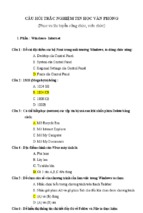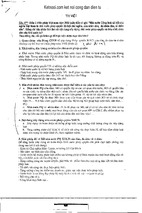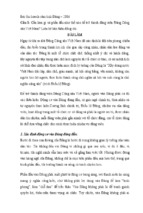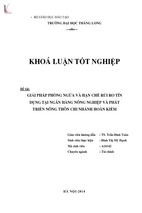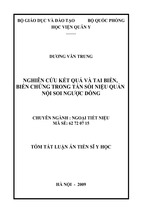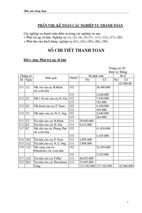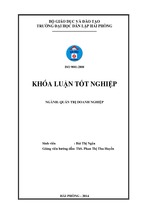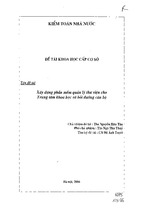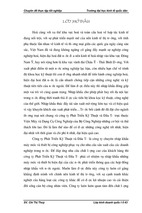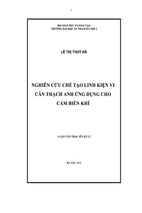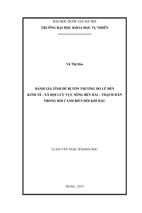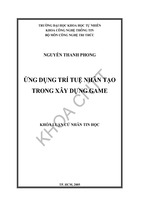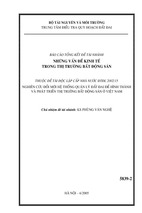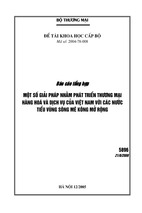Proposing a novel theory of parts of speech, this book discusses categorization
from a methodological and theoretical point of view. It draws on
discoveries and insights from a number of approaches – typology, cognitive
grammar, notional approaches and generative grammar – and presents a
generative, feature-based theory.
Building on up-to-date research and the latest findings and ideas in
categorization and word-building, Panagiotidis combines the primacy of
categorial features with a syntactic categorization approach, addressing the
fundamental, but often overlooked, questions in grammatical theory.
Designed for graduate students and researchers studying grammar and
syntax, this book is richly illustrated with examples from a variety of languages
and explains elements and phenomena central to the nature of human
language.
phoevos panagiotidis is Associate Professor of Linguistics in the
Department of English Studies at the University of Cyprus.
CATEGORIAL FEATURES
Proposing a novel theory of parts of speech, this book discusses categorization from a methodological and theoretical point of view. It draws on
discoveries and insights from a number of approaches – typology, cognitive
grammar, notional approaches and generative grammar – and presents a
generative, feature-based theory.
Building on up-to-date research and the latest findings and ideas in
categorization and word-building, Panagiotidis combines the primacy of
categorial features with a syntactic categorization approach, addressing the
fundamental, but often overlooked, questions in grammatical theory.
Designed for graduate students and researchers studying grammar and
syntax, this book is richly illustrated with examples from a variety of languages and explains elements and phenomena central to the nature of human
language.
phoevos panagiotidis is Associate Professor of Linguistics in the
Department of English Studies at the University of Cyprus.
In this series
107.
108.
109.
110.
111.
112.
113.
114.
115.
116.
117.
118.
119.
120.
121.
122.
123.
124.
125.
126.
127.
128.
129.
130.
131.
132.
133.
134.
SUSAN EDWARDS: Fluent Aphasia
BARBARA DANCYGIER and EVE SWEETSER: Mental Spaces in
Grammar: Conditional Constructions
HEW BAERMAN, DUNSTAN BROWN and GREVILLE G. CORBETT:
The Syntax–Morphology Interface: A Study of Syncretism
MARCUS TOMALIN: Linguistics and the Formal Sciences: The Origins of
Generative Grammar
SAMUEL D. EPSTEIN and T. DANIEL SEELY: Derivations in
Minimalism
PAUL DE LACY: Markedness: Reduction and Preservation in Phonology
YEHUDA N. FALK: Subjects and Their Properties
P. H. MATTHEWS: Syntactic Relations: A Critical Survey
MARK C. BAKER: The Syntax of Agreement and Concord
GILLIAN CATRIONA RAMCHAND: Verb Meaning and the Lexicon:
A First Phase Syntax
PIETER MUYSKEN: Functional Categories
JUAN URIAGEREKA: Syntactic Anchors: On Semantic Structuring
D.ROBERT LADD: Intonational Phonology, Second Edition
LEONARD H. BABBY: The Syntax of Argument Structure
B. ELAN DRESHER: The Contrastive Hierarchy in Phonology
DAVID ADGER, DANIEL HARBOUR and LAUREL J. WATKINS:
Mirrors and Microparameters: Phrase Structure beyond Free Word Order
NIINA NING ZHANG: Coordination in Syntax
NEIL SMITH: Acquiring Phonology
NINA TOPINTZI: Onsets: Suprasegmental and Prosodic Behaviour
CEDRIC BOECKX, NORBERT HORNSTEIN and JAIRO NUNES: Control
as Movement
MICHAEL ISRAEL: The Grammar of Polarity: Pragmatics, Sensitivity,
and the Logic of Scales
M. RITA MANZINI and LEONARDO M. SAVOIA: Grammatical
Categories: Variation in Romance Languages
BARBARA CITKO: Symmetry in Syntax: Merge, Move and Labels
RACHEL WALKER: Vowel Patterns in Language
MARY DALRYMPLE and IRINA NIKOLAEVA: Objects and Information
Structure
JERROLD M. SADOCK: The Modular Architecture of Grammar
DUNSTAN BROWN and ANDREW HIPPISLEY: Network Morphology:
A Defaults-Based Theory of Word Structure
BETTELOU LOS, CORRIEN BLOM, GEERT BOOIJ, MARION
ELENBAAS and ANS VAN KEMENADE: Morphosyntactic Change:
A Comparative Study of Particles and Prefixes
135.
136.
137.
138.
139.
140.
141.
142.
143.
144.
145.
STEPHEN CRAIN: The Emergence of Meaning
HUBERT HAIDER: Symmetry Breaking in Syntax
JOSE´ A. CAMACHO: Null Subjects
GREGORY STUMP and RAPHAEL A. FINKEL: Morphological Typology:
From Word to Paradigm
BRUCE TESAR: Output-Driven Phonology: Theory and Learning
´ ZAR AND MARIO SALTARELLI: The Syntax of Imperatives
ASIER ALCA
MISHA BECKER: The Acquisition of Syntactic Structure: Animacy and
Thematic Alignment
MARTINA WILTSCHKO: The Universal Structure of Categories: Towards
a Formal Typology
FAHAD RASHED AL-MUTAIRI: The Minimalist Program: The Nature
and Plausibility of Chomsky’s Biolinguistics
CEDRIC BOECKX: Elementary Syntactic Structures: Prospects of a
Feature-Free Syntax
PHOEVOS PANAGIOTIDIS: Categorial Features: A Generative Theory of
Word Class Categories
Earlier issues not listed are also available
CAMBRIDGE STUDIES IN LINGUISTICS
General Editors: p. austin, j. bresnan, b. comrie,
s. crain, w. dressler, c. j. ewen, r. lass, d. lightfoot,
k. rice, i. roberts, s. romaine, n. v. smith
CATEGORIAL FEATURES
A Generative Theory of Word Class Categories
C A T E G O R I A L FE A T U R E S
A GENERATIVE THEORY OF WORD
CLASS CATEGORIES
PHOEVOS PANAGIOTIDIS
University of Cyprus
University Printing House, Cambridge CB2 8BS, United Kingdom
Cambridge University Press is part of the University of Cambridge.
It furthers the University’s mission by disseminating knowledge in the pursuit of
education, learning and research at the highest international levels of excellence.
www.cambridge.org
Information on this title: www.cambridge.org/9781107038110
© Phoevos Panagiotidis 2015
This publication is in copyright. Subject to statutory exception
and to the provisions of relevant collective licensing agreements,
no reproduction of any part may take place without the written
permission of Cambridge University Press.
First published 2015
Printed in the United Kingdom by Clays, St lves plc
A catalogue record for this publication is available from the British Library
Library of Congress Cataloguing in Publication data
Panagiotidis, Phoevos.
Categorial features : a generative theory of word class categories / Phoevos Panagiotidis.
pages cm – (Cambridge studies in linguistics ; 145)
ISBN 978-1-107-03811-0 (Hardback)
1. Grammar, Comparative and general–Grammaticalization. 2. Categorial grammar.
3. Language, Universal. I. Title.
P299.G73P36 2014
415–dc23 2014020939
ISBN 978-1-107-03811-0 Hardback
Cambridge University Press has no responsibility for the persistence or accuracy of
URLs for external or third-party internet websites referred to in this publication,
and does not guarantee that any content on such websites is, or will remain,
accurate or appropriate.
Contents
Preface
1
1.1
1.2
1.3
1.4
1.5
1.6
2
2.1
2.2
2.3
2.4
2.5
2.6
2.7
page xiii
Theories of grammatical category
Introduction
Preliminaries to a theory: approaching the part-of-speech problem
1.2.1 On syntactic categories and word classes: some clarifications
1.2.2 Parts of speech: the naïve notional approach
1.2.3 Parts of speech: morphological criteria
1.2.4 Parts of speech: syntactic criteria
1.2.5 An interesting correlation
1.2.6 Prototype theory
1.2.7 Summarizing: necessary ingredients of a theory of category
Categories in the lexicon
Deconstructing categories
1.4.1 Distributed Morphology
1.4.2 Radical categorylessness
The notional approach revisited: Langacker (1987)
and Anderson (1997)
The present approach: LF-interpretable categorial features
make categorizers
1
1
1
3
4
6
7
8
9
11
12
17
17
18
Are word class categories universal?
Introduction
Do all languages have nouns and verbs? How can we tell?
Two caveats: when we talk about ‘verb’ and ‘noun’
2.3.1 Verbs, not their entourage
2.3.2 Misled by morphological criteria: nouns
and verbs looking alike
2.3.3 What criterion, then?
Identical (?) behaviours
The Nootka debate (is probably pointless)
Verbs can be found everywhere, but not necessarily as a word class
An interim summary: verbs, nouns, roots
24
24
25
26
26
19
21
27
28
29
32
37
40
ix
x
2.8
2.9
2.10
3
3.1
3.2
3.3
3.4
3.5
3.6
3.7
3.8
3.9
3.10
4
4.1
4.2
4.3
4.4
4.5
4.6
5
5.1
5.2
5.3
5.4
5.5
5.6
5.7
5.8
5.9
Contents
What about adjectives (and adverbs)?
2.8.1 Adjectives are unlike nouns and verbs
2.8.2 Adjectives are not unmarked
2.8.3 Adverbs are not a simplex category
The trouble with adpositions
Conclusion
41
41
42
48
49
51
Syntactic decomposition and categorizers
Introduction
Where are words made?
Fewer idiosyncrasies: argument structure is syntactic structure
There are still idiosyncrasies, however
Conversions
Phases
Roots and phases
On the limited productivity (?) of first phases
Are roots truly acategorial? Dutch restrictions
Conclusion
53
53
54
58
60
62
65
67
70
72
77
Categorial features
Introduction
Answering the old questions
Categorial features: a matter of perspective
The Categorization Assumption and roots
4.4.1 The Categorization Assumption
4.4.2 The interpretation of free roots
4.4.3 The role of categorization
4.4.4 nPs and vPs as idioms
Categorizers are not functional
Nouns and verbs
4.6.1 Keeping [N] and [V] separate?
4.6.2 Do Farsi verbs always contain nouns?
78
78
78
82
89
89
93
95
97
98
100
101
103
Functional categories
Introduction
The category of functional categories
Functional categories as ‘satellites’ of lexical ones
Biuniqueness
Too many categorial features
Categorial Deficiency
Categorial Deficiency 6¼ c-selection
Categorial Deficiency and roots (and categorizers)
Categorial Deficiency and Agree
106
106
106
110
111
116
117
120
122
124
Contents
5.10
6
6.1
6.2
6.3
6.4
6.5
6.6
6.7
6.8
6.9
6.10
6.11
7
7.1
7.2
7.3
8
8.1
8.2
8.3
8.4
8.5
8.6
xi
5.9.1 On Agree
5.9.2 Biuniqueness as a product of categorial Agree
5.9.3 Why there are no mid-projection lexical heads
5.9.4 How projection lines begin
5.9.5 Deciding the label: no uninterpretable Goals
Conclusion
124
126
127
128
130
133
Mixed projections and functional categorizers
Introduction
Mixed projections
Two generalizations on mixed projections
Free-mixing mixed projections?
Switches as functional categorizers
Morphologically overt Switches
Switches and their complements
6.7.1 Locating the Switch: the size of its complement
6.7.2 Phases and Switches
Are all mixed projections externally nominal?
6.8.1 Verbal nouns
The properties of mixed projections
6.9.1 Similarities: Nominalized Aspect Phrases in English
and Dutch
6.9.2 Differences: two types of Dutch ‘plain’ nominalized infinitives
6.9.3 Fine-grained differences: different features in
nominalized Tense Phrases
Why functional categorizers?
Conclusion
134
134
134
136
140
142
148
152
153
159
161
162
165
169
170
172
A summary and the bigger picture
A summary
Loose ends
Extensions and consequences
173
173
175
176
Appendix: notes on Baker (2003)
Introduction
Are nouns referential?
Syntactic predication, semantic predication and specifiers
Are adjectives the unmarked lexical category? Are they roots?
Pred and other functional categories
Two details: co-ordination and syntactic categorization
179
179
180
181
183
184
185
References
Index
189
204
166
166
Preface
The project resulting in this monograph began in 1999, when I realized that
I had to answer the question of why pronouns cannot possibly be ‘intransitive
determiners’, why it is impossible for Determiner Phrases (DPs) consisting of a
‘dangling D head’ (a turn of phrase my then PhD supervisor, Roger Hawkins,
used) – that is, made of a Determiner without a nominal complement – to exist.
The first answer I came up with was Categorial Deficiency, extensively argued
for in Chapter 5. Back then, however, Categorial Deficiency of functional
heads was just an idea, which was expounded in my (2000) paper. The case
for it was limited to arguments from biuniqueness and the hope was that it
would eventually capture Head Movement. The paper was delivered at the
April 2000 Spring Meeting of LAGB, in the front yard of UCL, in the open:
the fire alarm, this almost indispensable element of British identity and social
life, went off seconds after the talk started. It did not look good. However,
Categorial Deficiency did find its way into my thesis and the (2002) book
version thereof.
There were more serious problems, though: I quickly realized that ‘uninterpretable [N]’ and ‘uninterpretable [V]’ mean nothing if we have no inkling
of the actual interpretation of ‘interpretable [N]’ and ‘interpretable [V]’.
This inevitably brought me to the question of the nature of categorial features
and what it means to be a noun, a verb and an adjective. Surprisingly, this was
an issue very few people found of any interest, so for a couple of years or
so I thought I should forget about the whole thing. This outlook changed
dramatically in 2003, when Mark Baker’s book was published: a generative
theory of lexical categories with precise predictions about the function and
interpretation of categorial features. On the one hand, I was elated: it was about
time; on the other, I was disappointed: what else was there to say on lexical
categories and categorial features?
Quite a lot, as it turned out. Soon after my (2005) paper against syntactic
categorization, I had extensive discussions with Alan Bale and, later, Heidi
Harley. These were the impetus of my conversion to a syntactic decomposition
xiii
xiv
Preface
approach. At around the same time, Kleanthes Grohmann and I thought it
would be a good idea to see if his Prolific Domains could be shown to be coextensive to the categorially uniform subtrees making up mixed projections
(Bresnan 1997).
It is easy to figure out that I have incurred enormous intellectual debts to a
number of people; this is to be expected when working on a project stretching
for well over a decade. Before naming names, however, I have to gratefully
acknowledge that parts of this project were generously funded by Cyprus
College (now European University Cyprus) through three successive faculty
research grants, between 2003 and 2006.
Moving on to people now: Paolo Acquaviva, whom I met in 2009 at the
Roots workshop in Stuttgart, made me regain faith in my project and provided
me with priceless insight on where we could go after we finished with
categories and how roots really mattered. I owe to David Adger some pertinent
and sharp questions on Extended Projections, feature (un)interpretability and
mixed projections. Relentless and detailed commentary and criticism by Elena
Anagnostopoulou go a long way, and they proved valuable in my sharpening
the tools and rethinking all sorts of ‘facts’. Thanks to Karlos Arregi I had to
seriously consider adpositions and roots inside them. Mark Baker, talking to
me in Utrecht in 2001 about the book he was preparing, and discussing nouns
and verbs in later correspondence, has been an inspiration and an indispensable
source of encouragement. Thank you, Hagit Borer, for asking all those tough
questions on idiomaticity. I am truly indebted to Annabel Cormack, who
significantly deepened (or tried to deepen) my understanding of the foundational issues behind lexical categories and their interpretation. Discussing roots
and categorizers with David Embick in Philadelphia in 2010 served as a oneto-one masterclass for me. Kleanthes Grohmann – enough said: a valuable
interlocutor, a source of critical remarks, a true collega. Heidi Harley, well,
what can I say: patience and more patience and eagerness to discuss pretty
much everything, even when I would approach it from an outlandish (I cannot
really write ‘absurd’, can I?) angle, even when I would be annoyingly ignorant
about things; and encouragement; and feedback. Most of what I know about
Russian adjectives I owe to Svetlana Karpava and her translations. Richie
Kayne has been supportive and the most wonderful person to discuss all those
‘ideas’ of mine with throughout the years. Richard Larson, thank you for
inviting me to Stony Brook and for all the stimulating discussions that
followed. Winnie Lechner helped me immensely in investigating the basic
questions behind categorization and category and his contribution to my
thinking about mixed projections was momentous and far-ranging. Alec
Preface
xv
Marantz took the time and the effort when I needed his sobering feedback
most, when I was trying to answer too many questions on idiomaticity and root
interpretation. Discussions with Sandeep Prasada, and his kindly sharing his
unpublished work on sortality with me, provided a much-needed push and the
opportunity to step back and reconsider nominality. Gratitude also goes to
Marc Richards, the man with the phases and with even more patience. Luigi
Rizzi has been a constant source of support and insight, through both gentle
nudges and detailed discussions. David Willis’ comments on categorial Agree
and its relation to movement gave me the impetus to make the related discussion in Chapter 5 bolder and, I hope, more coherent.
I also wish to thank the following for comments and discussion, although
I am sure I must have left too many people out: Mark Aronoff, Adriana
Belletti, Theresa Biberauer, Lisa Cheng, Harald Clahsen, Marijke De Belder,
Carlos de Cuba, Marcel den Dikken, Jan Don, Edit Doron, Joe Emonds,
Claudia Felser, Anastasia Giannakidou, Liliane Haegeman, Roger Hawkins,
Norbert Hornstein, Gholamhosein Karimi-Doostan, Peter Kosta, Olga Kvasova, Lisa Levinson, Pino Longobardi, Jean Lowenstamm, Rita Manzini, Ora
Matushansky, Jason Merchant, Dimitris Michelioudakis, Ad Neeleman, Rolf
Noyer, David Pesetsky, Andrew Radford, Ian Roberts, Peter Svenonius,
George Tsoulas, Peyman Vahdati, Hans van de Koot, Henk van Riemsdijk.
I also wish to thank for their comments and feedback the audiences in Cyprus
(on various occasions), Utrecht, Pisa, Potsdam, Jerusalem, Patras, Paris, Athens
and Salonica (again, on various occasions), Cambridge (twice, the second time
when I was kindly invited by Theresa Biberauer to teach a mini course on
categories), Chicago, Stony Brook, NYU and CUNY, Florence, Siena, Essex,
Amsterdam, Leiden, York, Trondheim, Lisbon and London.
Needless to say, this book would have never been completed without
Joanna’s constant patience and support.
My sincere gratitude goes out to the reviewers and referees who have looked
at pieces of this work: from the editor and the referees at Language who
compiled the long and extensive rejection report, a piece of writing that
perhaps influenced the course of this research project as significantly as key
bibliography on the topic, to anonymous referees in other journals, and to the
reviewers of Cambridge University Press. Last but not least, I wish to express
my gratitude to the Editorial Board of the Cambridge Studies in Linguistics
for their trust, encouragement and comments.
Finally, I wish to dedicate this book with sincere and most profound
gratitude to my teacher, mentor and friend Neil V. Smith.
1 Theories of grammatical category
1.1
Introduction
In this first chapter, we will review some preliminaries of our discussion on
parts of speech and on the word classes they define. As in the rest of this
monograph, our focus will be on lexical categories, more specifically nouns
and verbs. Then I will present a number of approaches in different theoretical
frameworks and from a variety of viewpoints. At the same time we will discuss
the generalizations that shed light on the nature of parts of speech, as well as
some necessary conceptual commitments that need to inform our building a
feature-based theory of lexical categories.
First of all, in Section 1.2 the distinction between ‘word class’ and ‘syntactic
category’ is drawn. The criteria used pre-theoretically, or otherwise, to distinguish between lexical categories are examined: notional, morphological and
syntactic; a brief review of prototype-based approaches is also included.
Section 1.3 looks at formal approaches and at theories positing that nouns
and verbs are specified in the lexicon as such, that categorial specification is
learned as a feature of words belonging to lexical categories. Section 1.4
introduces the formal analyses according to which categorization is a syntactic
process operating on category-less root material: nouns and verbs are ‘made’
in the syntax according to this view. Section 1.5 takes a look at two notional
approaches to lexical word classes and raises the question of how their insights
and generalizations could be incorporated into a generative approach. Section
1.6 briefly presents such an approach, the one to be discussed and argued for in
this book, an account that places at centre stage the claim that categorial
features are interpretable features.
1.2
Preliminaries to a theory: approaching the part-of-speech problem
As aptly put in the opening pages of Baker (2003), the obvious and fundamental question of how we define parts of speech – nouns, verbs and
1
2
Theories of grammatical category
adjectives – remains largely unresolved. Moreover, it is a question that is rarely
addressed in a thorough or satisfactory manner, although there is a lot of
stimulating work on the matter and although there is no shortage of both
typological and theoretical approaches to lexical categories. In this book
I am going to argue that we can successfully define nouns and verbs (I will
put aside adjectives for reasons to be discussed and clarified in Chapter 2) if
we shift away from viewing them as broad taxonomic categories. More
specifically, I am going to make a case for word class categories as encoding
what I call interpretive perspective: nouns and verbs represent different
viewpoints on concepts; they are not boxes of some kind into which different
concepts fall in order to get sorted. I am furthermore arguing that nouns
and verbs are ultimately reflexes of two distinctive features, [N] and [V], the
LF-interpretable features that actually encode these different interpretive
perspectives.
The theory advanced here gives priority to grammatical features, to categorial features more precisely. As mentioned, it will be argued that two unary
categorial features exist, [N] and [V], and that the distinct behaviour of nouns
and verbs, of functional elements and of categorially mixed projections result
from the syntactic operations these features participate in and from their
interpretation at the interface between the Faculty of Language in the Narrow
sense (FLN) and the Conceptual–Intentional systems. The feature-driven character of this account is in part the result of a commitment to fleshing out better
the role of features in grammar. Generally speaking, I am convinced that our
understanding of the human Language Faculty will advance further only if we
pay as much attention to features as we (rightly and expectedly) do to
structural relations. True, grammatical features, conceived as instructions to
the interfaces after Chomsky (1995), will ultimately have to be motivated
externally – namely, by properties of the interfaces. However, we know very
little about these interfaces and much less about the Conceptual–Intentional
systems that language interfaces with. So, we cannot be confident about what
aspects of the Conceptual–Intentional systems might motivate a particular
feature or its specific values, or even its general behaviour. To wit, consider
the relatively straightforward case of Number: we can hardly know how many
number features are motivated by the Conceptual–Intentional systems to form
part of the Universal Grammar (UG) repertory of features – that is, without
looking at language first. More broadly speaking, it is almost a truism that most
of the things we know about the interface between language and the
Conceptual–Intentional systems, we do via our studying language, not via
studying the Conceptual–Intentional systems themselves.
- Xem thêm -

